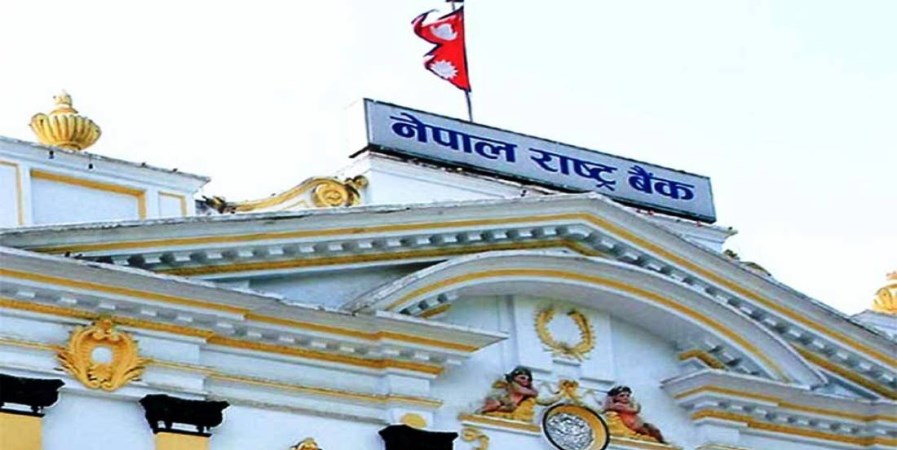Economy shows symptoms of COVID-19 contagion

By A Staff Reporter
Kathmandu, June 17: Remittance inflow has fallen significantly following the outbreak of COVID-19.
Remittance inflows decreased by 6.1 per cent to Rs. 680.84 billion in first 10 months of the current fiscal year 2019/20 against an increase of 19.6 per cent in the same period of the previous year, according to the Macroeconomic and Financial Situation report of the Nepal Rastra Bank (NRB).
In the US dollar terms, such inflows decreased by 7.4 per cent in mid-May against an increase of 9.3 per cent in the corresponding period of the previous year. Remittance inflows had decreased by 4 per cent to Rs. 626.90 billion by mid-April against an increase of 20.9 per cent of the previous year.
Impact of COVID-19 has become more visible in other areas of economy as well due to decreased economic activities, foreign trade and everyday operations of the government and private sector.
According to the central bank, the current account registered a deficit of Rs. 105.74 billion in 10 months. Such deficit was Rs. 221.77 billion in the same period the previous year.
In the US dollar terms, the current account deficit remained at Rs. 938 million in the review period compared to Rs. 1.96 billion a year ago.
Likewise, capital transfer and foreign direct investment (FDI) in Nepal amounted to Rs. 12.49 billion and Rs. 17.42 billion respectively. In the same period of the previous year, capital transfer and FDI had amounted to Rs. 13.48 billion and Rs. 9.47 billion respectively.
Balance of Payments (BOP) remained at a surplus of Rs. 120.90 billion in the review period against a deficit of Rs. 68.20 billion in the previous year, said the NRB. Gross foreign exchange reserves increased by 18.9 per cent to Rs. 1,235 billion in mid-May 2020 from Rs. 1,038.9 billion in mid-July 2019.
In ten months of 2019/20, merchandise exports increased by 4.5 per cent to Rs. 82.06 billion compared to an increase of 18.9 per cent a year ago.
Exports to India increased by 16.1 per cent whereas exports to China and other countries decreased by 38.6 per cent and 14.6 per cent, respectively. Exports of palm oil, ayurvedic medicine, paper and Nepalese paper products, plastic utensils, M.S. pipe, among others, increased whereas export of zinc sheet, wire, polyester yarn and threads, woollen carpet, juice, among others, decreased.
Similarly, merchandise imports decreased by 13 per cent to Rs. 1025.14 billion against an increase of 19.6 per cent in 10 months of the last year.
Destination-wise, imports from India, China and other countries decreased by 17.5 per cent, 7.6 per cent, and 2.9 per cent, respectively. Imports of crude palm oil, chemical fertiliser, crude soybean oil, computer and parts, edible oil, among others, increased whereas imports of petroleum products, transport equipment and parts, M.S. billet, gold, cement, among others, decreased in the review period.
Increase in export and decrease in import has resulted in narrowed trade deficit. Total trade deficit narrowed down by 14.2 per cent to Rs. 943.07 billion in the ten months of 2019/20. Such deficit had expanded by 19.7 per cent in the same period of the previous year.
The export-import ratio increased to 8 per cent in the review period from 6.7 per cent of the previous year.
Inflation goes up
The consumer price inflation stood at 5.83 per cent in mid-May 2020 compared to 5.29 per cent a year ago.
Food and beverage inflation stood at 8.66 per cent whereas non-food and service inflation stood at 3.67 per cent in the review period. Under the food and beverage group, the price of fruits, vegetables, pulses and legumes and spices sub-groups rose significantly in the review period.
However, the expenditure of the federal government based on banking transactions (excluding direct payments and unrealized cheques) stood at Rs. 725.61 billion which is higher than the expenses Rs. 677.68 billion made last year. But revenue collection has gone down. In the review period, revenue collection based on banking transactions (including the amount to be transferred to provincial and local governments) stood at Rs. 606.82 billion. Total government revenue was Rs. 665.91 billion in the corresponding period of the previous year.
Recent News

Do not make expressions casting dout on election: EC
14 Apr, 2022
CM Bhatta says may New Year 2079 BS inspire positive thinking
14 Apr, 2022
Three new cases, 44 recoveries in 24 hours
14 Apr, 2022
689 climbers of 84 teams so far acquire permits for climbing various peaks this spring season
14 Apr, 2022
How the rising cost of living crisis is impacting Nepal
14 Apr, 2022
US military confirms an interstellar meteor collided with Earth
14 Apr, 2022
Valneva Covid vaccine approved for use in UK
14 Apr, 2022
Chair Prachanda highlights need of unity among Maoist, Communist forces
14 Apr, 2022
Ranbir Kapoor and Alia Bhatt: Bollywood toasts star couple on wedding
14 Apr, 2022
President Bhandari confers decorations (Photo Feature)
14 Apr, 2022











